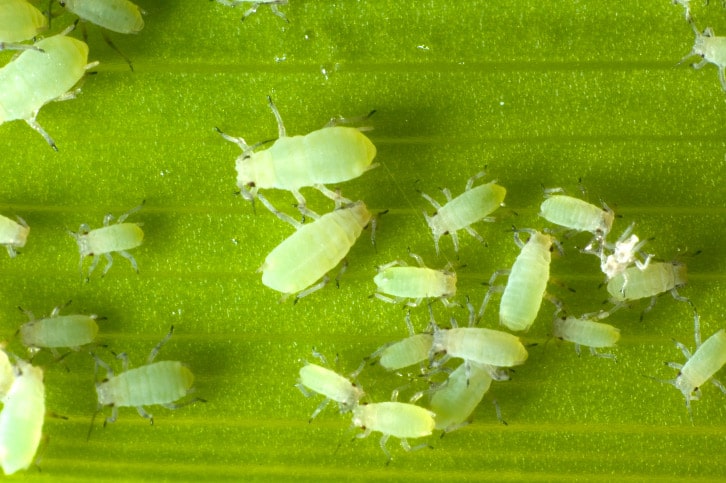Aphids have soft pear-shaped bodies measuring 1.5-4mm in length with long legs and antennae, their colour ranges from green, yellow, brown, red, to black depending on the species. They occur in clusters around the young terminal shoots or under the leaves.
Aphids
Biology
In greenhouse conditions, aphids are prolific. They give birth to live young ones parthenogenetically (without mating), and only females are produced. The females give birth to 3-10 offspring per day, each of which is ready to feed and already contains developing embryos of the next generation. Young aphids pass from nymph to adults with 7-8 days, thus producing several generations per year. As colonies grow and food quality declines, aphids develop wing to migrate to less populated areas of the crop.
Damage
Aphid nymphs and adults suck plant sap leading to stunted growth, deformed leaves and sometimes yellow spots appear. In addition to damage from direct feeding on plant sap, they excrete excess sugars in the form of honeydew which serves as a growth medium for black sooty mold. This soils the crop, reducing photosynthesis and consequently growth and production. Aphids are also vectors of plant pathogenic substances, particularly, viruses.


